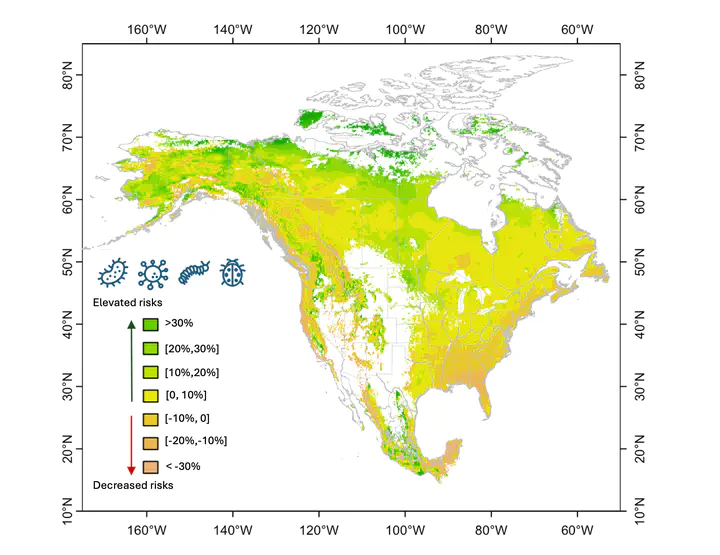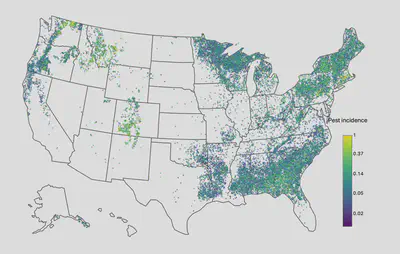Predict climate change-driven risks of forest disease and pests

Insect pests and disease outbreaks present significant threats to forest health, ecosystem productivity, carbon sequestration and biodiversity. Impact of forest pests is exacerbated by climate change; however, variability in climate impacts and non-linearities in species’ responses challenge our ability to make robust forecasts.
Using hierarchical Bayesian modelling of pest incidence recorded on >1 million trees across North America, we show that warming and drought will jointly amplify pest incidence, with impacts stronger in cooler and drier regions. Integrating both temperature and precipitation effects and how these interact with historical climate, we present the first atlas of future pest risk for North American forests (as shown in the title figure).

Our projections reveal that more than 75% of currently forested land in North America, and 43% of the tree species will experience increased pest pressure in the coming decades. We show increased pest incidence prevailing at higher latitudes and in boreal forest, and identify trees and species traits associated with high risk of elevated pest pressure. This work represents a comprehensive assessment of climate impacts on forest pests, informing management and conservation strategies to mitigate pest impacts.